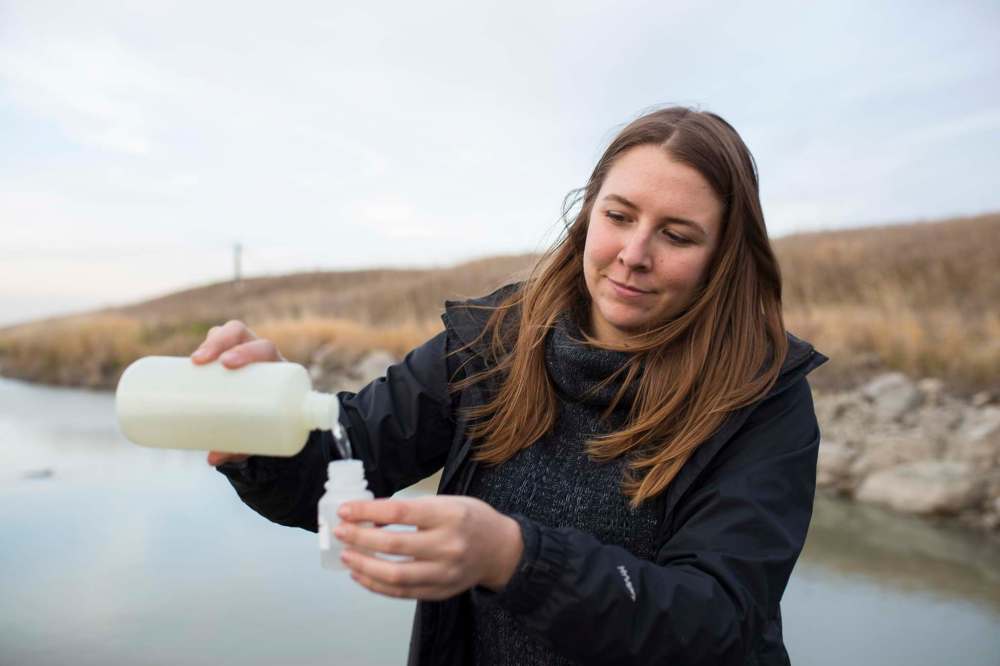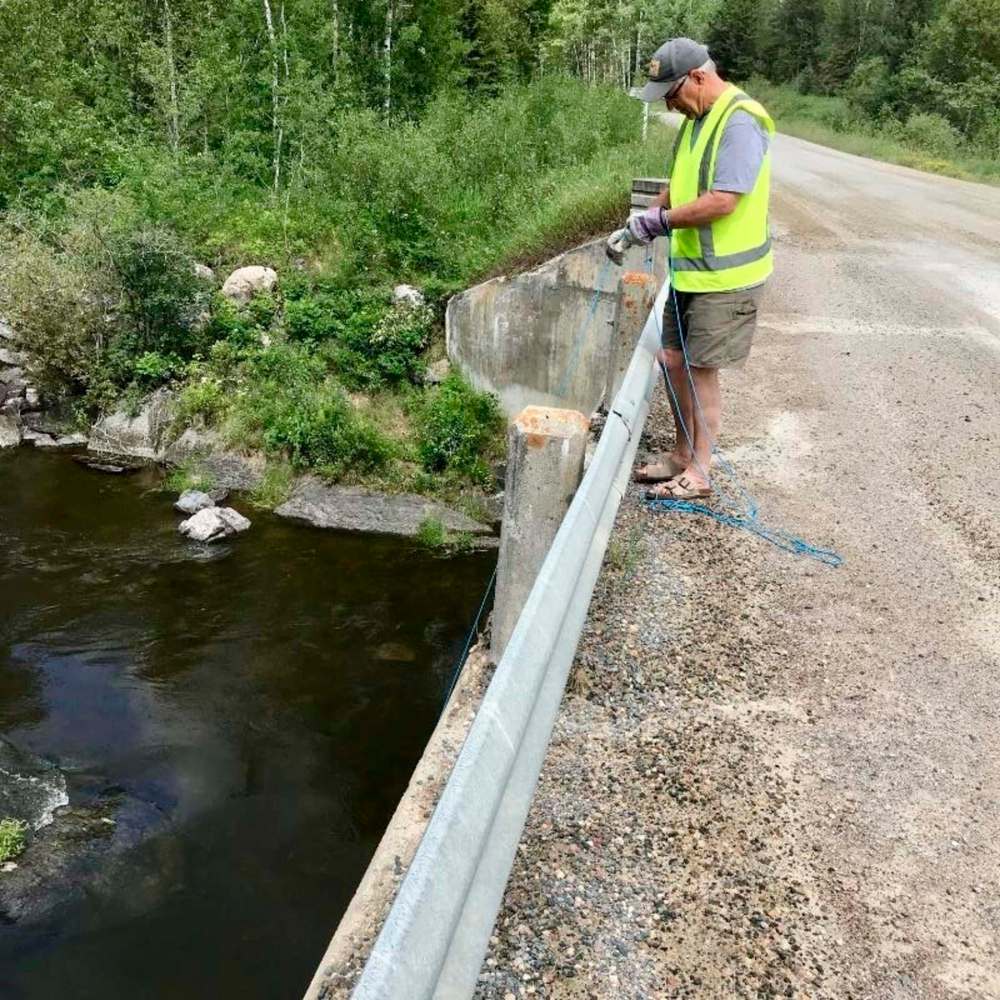Fighting phosphorus
Citizen scientists gather data to help keep Lake Winnipeg healthy
Advertisement
Read this article for free:
or
Already have an account? Log in here »
To continue reading, please subscribe:
Monthly Digital Subscription
$0 for the first 4 weeks*
- Enjoy unlimited reading on winnipegfreepress.com
- Read the E-Edition, our digital replica newspaper
- Access News Break, our award-winning app
- Play interactive puzzles
*No charge for 4 weeks then price increases to the regular rate of $19.00 plus GST every four weeks. Offer available to new and qualified returning subscribers only. Cancel any time.
Monthly Digital Subscription
$4.75/week*
- Enjoy unlimited reading on winnipegfreepress.com
- Read the E-Edition, our digital replica newspaper
- Access News Break, our award-winning app
- Play interactive puzzles
*Billed as $19 plus GST every four weeks. Cancel any time.
To continue reading, please subscribe:
Add Free Press access to your Brandon Sun subscription for only an additional
$1 for the first 4 weeks*
*Your next subscription payment will increase by $1.00 and you will be charged $16.99 plus GST for four weeks. After four weeks, your payment will increase to $23.99 plus GST every four weeks.
Read unlimited articles for free today:
or
Already have an account? Log in here »
Hey there, time traveller!
This article was published 03/08/2019 (2320 days ago), so information in it may no longer be current.
Volunteers from across Manitoba are heading to local waterways to help the Lake Winnipeg Foundation (LWF) collect data they hope will help improve the health of the province’s great lake.
“We all have to do our part,” says Jim Duthie, a Birds Hill resident and LWF citizen scientist. “This is one small thing I am doing, but it’s all part of a bigger picture as we look for bigger strategies to help keep Lake Winnipeg healthy.”
Duthie currently collects water samples at the mouth of Bird Lake near his family cottage. He is one of the more than 100 volunteers currently working as a citizen scientist with the Lake Winnipeg Community-Based Monitoring Network.

The network is helping the foundation collect data about phosphorus levels in Manitoba waterways.
In 2016, LWF started to put together a coalition of citizen scientists, and those volunteers have spent the past three years collecting water samples from bodies of water that make up the Lake Winnipeg watershed.
The samples are then tested to determine phosphorus concentrations, as phosphorus is the nutrient responsible for blue-green algae blooms on Manitoba’s lakes, notably Lake Winnipeg.
With LWF seeking as much data on phosphorus levels as possible, it decided it couldn’t simply rely on environmental scientists or government bodies to do this kind of testing.
“The original idea came from a data deficit in phosphorus data in the watershed, so we saw this as an opportunity to collect more data while also engaging citizens in the process,” says Chelsea Lobson, co-ordinator of the monitoring network.
Volunteers across Manitoba head out during spring, summer and fall to test phosphorus levels.
“With this kind of data, it is really important to collect samples during the spring melt and after big rain events,” Lobson says.
“And citizens allow the network to be nimble and responsive; the volunteers work or live or commute near their samples areas, so they can sample frequently during the spring melt, and also collect samples at a moment’s notice after a big rain event.”
LWF hopes the information it has gathered will lead to solutions to the problem of algae blooms in Lake Winnipeg, Lobson says.
“So we all know that phosphorus causes algae, but in order to reduce that phosphorus, we need to know where it’s coming from, and the network is giving us those answers,” Lobson says.
“They’re collecting phosphorus samples to identify phosphorus hot spots and looking for areas contributing more relative to other areas, and once we know where those hot spots are, we are able to target them.”
With that data now in its hands, executive director Alexis Kanu says, the foundation can work at developing strategies to combat phosphorus in Manitoba waterways.
“It has really been beneficial,” Kanu says. “It is showing us some really interesting stuff, and it is complementary to what we know from government monitoring programs.”

A number of phosphorus hot spots were detected in Manitoba in 2017, which was a higher-precipitation year, according to Kanu.
“So when we can find those phosphorus hot spots, then we know that is where we need to be doing the work to reduce phosphorus loading,” she says.
“We obviously want to be working in the landscapes that are contributing the most phosphorus, because there is the most to be gained by reducing phosphorus there.”
Phosphorus hot spots that were discovered in 2017 did not reappear in 2018 — a much drier year — and that tells LWF that runoff plays a big factor in phosphorus levels, Kanu says.
“What that tells us is 2018 was a dry year, so when we have low water levels and low water flows, then less phosphorus is getting into the lake, so if we can replicate dry conditions by keeping water back on the land by holding it behind dams or in retention ponds or in natural wetlands, we can replicate the dry conditions that lead to low phosphorus loading,” Kanu says.
“We were expecting the data to show us where to do the work, but now it’s starting to hint at possible solutions, and anything that helps us tackle this problem by narrowing our focus and making sure we are being strategic is going to go a long way.”
Kanu says it has been the hard work but also the passion of their volunteers that has so far made the monitoring program a success.
“It isn’t something that we could do on our own, and it isn’t anything that any of our partners could do on their own,” Kanu says. “It depends on people coming together and deciding they are going to be a part of this larger network and become part of us discovering the bigger picture.
“I can say that I have been completely inspired by how engaged volunteers are and how committed they are to this.”
For more information on volunteering with the Lake Winnipeg Community-Based Monitoring Network, contact Chelsea Lobson at cbm@lakewinnipegfoundation.org, or visit lakewinnipegfoundation.org.





